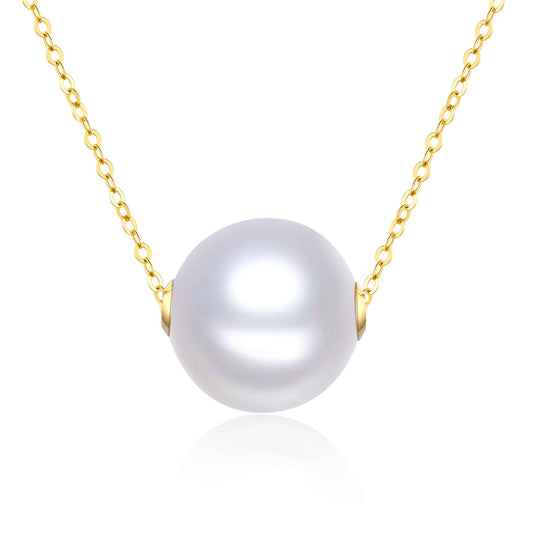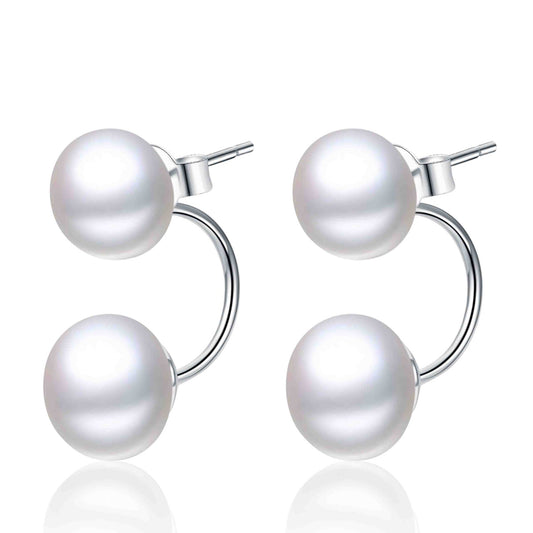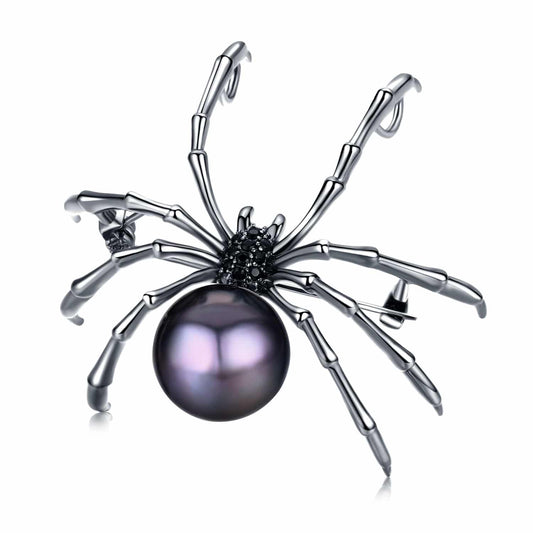
Everything You Need to Know about Tahitian Black Pearls
Share
Exquisite, exotic, and mysterious – black pearls have captivated hearts for centuries.
Natural black pearls are extremely rare, and only the super-rich were able to afford these magnificent gems. But a few decades ago, all that changed. Black pearls are now cultivated and farmed for the enjoyment of the everyday woman. Although still rare, compared to the total amount of cultured pearls produced in the world, it is now within reach of more women.
The jewelry we wear contribute to the richness of the story of our lives, and no gem more so than black pearls. In this blog we discuss everything you need to know about Tahitian and other black pearls, so you can also enrich your life with these exquisite black pearl gemstones.
Types of Saltwater Pearls
Tahitian pearls are saltwater pearls, in other words, they’re grown in the ocean. Saltwater pearls tend to be more lustrous, or glossy, than freshwater pearls, which makes them more valuable.
There are four common types of saltwater pearls:
- Akoya pearls: The classic white pearl cultivated off the coast of Japan.
- White South Sea pearls: Rare, valuable, and large pearls grown primarily in the waters of Australia, the Philippines, and Indonesia.
- Golden South Sea pearls: The same origin as White South Sea pearls, but with a richer color.
- Tahitian black pearls: Dark and exotic black saltwater pearls cultivated around the French Polynesian islands. They’re also called Black South Sea pearls.
Where Do Black Pearls Come From?
Although we’re most familiar with Tahitian black pearls, that’s not the only type of black pearl that is produced. There is another location also situated in the south-central Pacific Ocean:
- 95% of the world’s black pearls are produced around Tahiti Island, French Polynesia. This pearl is called the Tahitian Black Pearl.
- 4% of black pearls are produced in the Penglin Island and Manihiki Island, which are part of the Cook Islands.
The Symbolism of Black Pearls
There are many legends and myths surrounding black pearls. The most famous is the one of Princess Bora Bora. As the story goes, the god of peace and fertility, Oro, gifted the princes with a black pear to symbolize his eternal love.
Read more about this legend and others here and here.
Black Pearl History
Throughout history, the European royal families have always loved pearls, as can often be seen in old pictures and paintings. In these portraits, white pearls are most prominent, but black pearls were also popular, but very rare.
In the mid-19th century, a large number of fishing boats traveled from Sydney, San Francisco, and Chile to Tahiti to catch the Pinctada margaritifera, also called the Black-lip pearl oyster, in which black pearls are commonly found.
Not only did they open the shells to gather the pearls, but they also used the shells themselves to make buttons. Before buttons were made primarily with plastic, shells were cut to use as buttons. The black inner layer of these black pearl shells made the most beautiful buttons.
However, after more than a century of overfishing, by the mid-20th century, the black-lip pearl oysters in Tahiti were on the verge of extinction.
A New Dawn: Tahitian Black Pearl Farming
The pearl culturing experiment started in Tahiti in 1961, using Japanese pearl farming techniques, but, it took a few years before black pearl culturing became successful.
In 1966 the first pearl farms were built, but they weren’t very successful. It was only in 1972 when the first Tahitian black pearls were exported to other countries – about 1,563 kilograms.
How Are Black Pearls Formed?
Tahitian pearls take more than 24 months to form inside the oyster shell. A small bead is surgically inserted into the pearl sac, and during its growth period, hundreds of thin layers of nacre and vermiculite crystals are secreted to envelop the beads and to finally form the pearl.
Once the nacre covering the bead is thick enough, the pearl farmer would open the oyster with the black pearl inside to remove the gem.
Black Pearl Colors
Contrary to popular belief, not all Tahitian cultured pearls are black. These pearls come in a remarkable range of colors, including creamy white, green, iridescent peacock green, blue, purple, gray, silver, blue-black, gray-black, brown-black, iron gray, and of course, deep black.
Pearls get their colors from the shell they grow in. The black-lipped oyster has a thick inner black shell and secretes this dark nacre to cover the bead implanted in the shell sac, which is why some pearls are black. The nearer this bead is to the shell wall, the darker the bead will be. The darker the color, the higher the value and the price.
The most popular black pearl colors are the rainbow-like colors, like peacock, rich purple, and sea blue. The strong metallic luster on these pearls changes as you rotate the pearl. These pearls are more valuable, and also more expensive, with peacock green at the top of that list.
Matching black pearl beads to form a string of black pearls is extremely difficult as most beads have a different color or shade.
Black Pearl Luster
The luster of a pearl refers to the intensity of the reflection on the surface of the pearl. Pearls with great luster are glossy and you can even see your own image on the surface of the pearl, like a mirror. The greater the luster, the higher the value of a black pearl.
Pearls with a more matt-like luster look a bit dull and therefore have a lower value.
Black Pearl Sizes
Tahitian black pearls are typically between 8-14 mm in size, which is much larger than the classic white Akoya pearl.
Most black pearls are between 9-10mm. A black pearl larger than 15mm is rare, and those exceeding 17mm is a rare treasure.
Black Pearl Shapes
Pearls are rarely perfectly round, but as can be expected, round pearls are the most popular shape and therefore also the most expensive.
Tahitian pearls typically come in five different shapes:
- Circular or semicircular
- Oval or button-shaped
- Drop-shaped
- Circle-shaped
- Semi-Baroque or Baroque
The Surface of Black Pearls
The surface of pearls often has little bumps, threads, wrinkles, and spots, which makes it part of their beauty.
Of course, the more perfect the surface, the higher the value.
Where to Buy Black Pearls?
If you’re ready to enrich your life with the mysterious black pearl, you can check out our online shop for black pearl jewelry:



